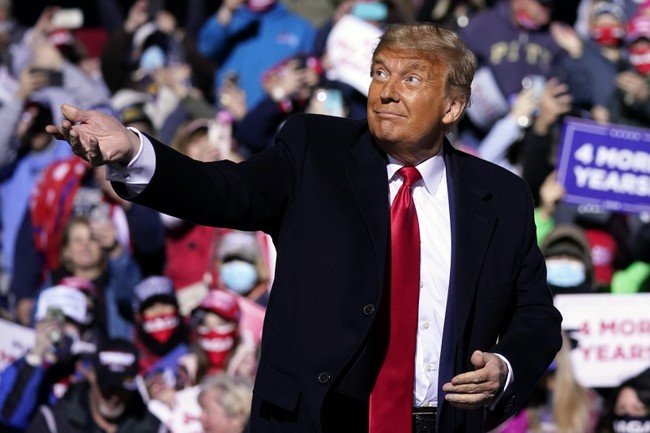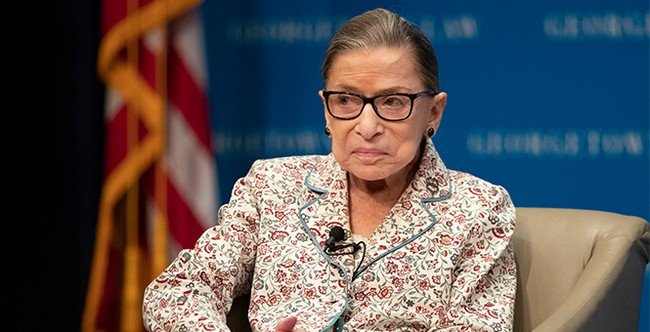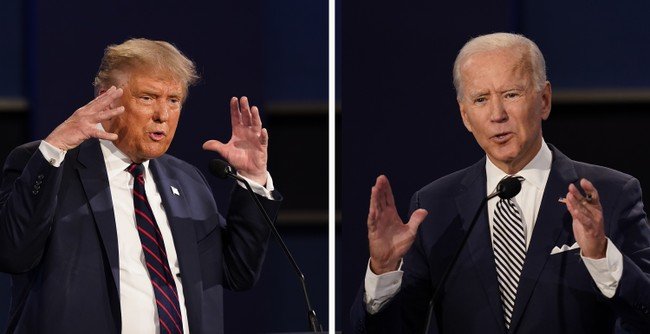I hate (and I really HATE) the trend of journalists, analysts and commentators rushing to the nearest television camera or website to offer their Nostradamus-like prediction of what will happen on Election Day.
When did the craft of journalism include the art of forecasting? (I mean, aside from suggesting whether you should score three points for the Lions at home this weekend…spoiler alert: Yes, you should.)
I personally hate any knowledgeable guy or girl who tells you what is about happen on Election Day, rather than analyzing what is actually what’s happening right now and what it means for all of us. Discussing current news and why we should care about the facts we know is much more valuable than guessing what will happen next week, right?
That’s why when I’m on the radio (two hours a day on KABC in Los Angeles and three hours a day on WMAL in Washington, D.C.), I refuse to predict. If I’m ever a guest on TV news (usually Tucker or Shannon Bream on Fox News), I refuse to predict. If the authorities here in Townhall asked me to make public predictions, I would refuse.
I won’t do it.
However… You are a VIP Townhall member and this column is exclusively for you. This stays just between us, right? As if we were at a bar on the Annapolis Pier, watching uniformed cadets walk freely while the oversized ice cube in our Buffalo Trace bourbon slowly begins to melt in the midday weekend sun.
Watching the boats sail into the Chesapeake Bay and the sun giving us the last autumn warmth we’ll experience before the frigid of winter sets in, I just… hypothetically Let’s discuss next week’s election, shall we?
First, let’s determine what we want to achieve next Tuesday. It’s about 270 electoral college votes and nothing more. You know it. You are intelligent. You don’t read Vox. But I just wanted to reiterate…the nationwide popular vote is like this literally meaningless and, consequently, national opinion polls that reflect national presidential preferences are completely meaningless. So ignore it.
We are about to take part in 51 elections – one in each state and the District of Columbia. The winner of this election will determine the distribution of electors in the electoral college. The candidate who receives 270 electoral votes will be president for the next four years.
That’s all.
Now, to predict what will happen next week, we need to look at what happened four years ago.
Trump marched to victory, securing states that have traditionally fallen into the Republican column. From there, he had to combine a combination of states that typically swing between Republicans and Democrats. But he went further… flipped several states that had voted Democratic for many, many years (even decades) and put them in play in 2020. I’m talking, of course, about Michigan, Wisconsin, and Pennsylvania.
Since these three states were sort of wildcard states in the last election, let’s put them aside for a moment, shall we?
Let’s go back to the GOP lasting state map and go from there.
If Trump does what he did four years ago, he will shut down classic GOP states and Maine’s only congressional district (where he recently went to a rally). This assumption includes traditionally GOP states such as Texas, Georgia, Arizona and Iowa.
I know, I know, the media says these states are up for grabs. OK. Let them. They also said they were up for grabs four years ago and they were wrong. They said Beto O’Rourke would beat Ted Cruz and they were wrong. As far as I’m concerned, these states remain solidly Republican until voters push them in a modern direction. That’s the only thing that will convince me that these states are up for grabs… not some analyst assuring me that these states have changed based on their observations, especially when those analysts have been consistently wrong on this point over the last few years .
And let’s face it: If Texas and Georgia elect Joe Biden, the rest of this analysis is completely irrelevant, and we as a conservative movement have a lot of work to do.
This brings us to two states that have recently been swinging between themselves, North Carolina and Florida.
Note: Ohio is NOT even in this conversation and most analysts agree. Ohio is solid for Trump. Remember four years ago? Ohio was supposed to be a “loss” and it wasn’t even close. Remember this… more on the Ohio phenomenon later.
So North Carolina and Florida.
I’ll be candid: I don’t see Trump winning the White House unless he wins Florida. The map is simply too arduous to search if he doesn’t have Florida’s 29 votes. Trump knows this. That’s why he spent so much time there. In my opinion, Trump has a very sturdy position here. Many polls show him as high as four (Rasmussen and Susquehanna), and even the RCP average is within half a point, given the usually skewed polls showing Biden’s good standing.
But more importantly, my opinion of Florida is more influenced by what happened in 2018. Rick Scott won the Senate seat and Ron DeSantis won the governorship. According to experts and polls, none of them “should” win. 2018 was a terrible year for Republicans overall, but not in Florida. And Trump is doing very, very well in the polls among Latino voters. This will tip the scales…Trump wins in Florida.
North Carolina is also considered a “throwaway” according to the RCP average. This includes two polls (Rasmussen and Trafalgar) that show Trump with a three-point lead in the state. For me, I rely on statewide polls that were right in 2016 and barely pay attention to those that were wrong then. I mean, shouldn’t they get it right at least once before I believe them? In 2016, it was also a tie and Trump won by almost four points. He “won” the polls. Expect the same this time around.
If Trump wins the classic GOP states and secures Florida and North Carolina, he will win 260 electoral college votes.
260. Just ten more.
How does he get there? Well, right now we’re looking back at these three states: Michigan, Wisconsin, and Pennsylvania.
Trump only needs one of them. Only one. Biden needs all three.
Also consider that the Trump campaign considers Minnesota a “throwaway” state at this point. I disagree because, to be consistent, a state that has voted for the Democratic candidate since 1976 actually has to change one of those moments before I would consider that as a possibility… regardless of what the polls say.
So let’s focus on these three. Pennsylvania was ground zero for most of both candidates’ campaign rallies and events. It’s a large enchilada.
Two things tell me Trump is in the driver’s seat: Biden’s failure on fracking/oil extraction, and Trump’s strength as an incumbent, not an unknown quantity.
Fracking will be enough, frankly, to hand the state over to Trump. Remember that Ohio isn’t even a “kick-out” item this time? Well, much of western Pennsylvania is culturally, economically, and demographically very similar to Ohio. It has remained solid for Trump, and will be even more resolute and motivated in the face of threats to their livelihoods due to Biden’s radical stance on fracking. This is not a theory… these people remember how Obama disregarded their lives. That’s why they chose Trump last time.
There’s also the “known quantity” issue. In 2016, Pennsylvania voters took a leap of faith. They went for Trump and defied all odds, and their voting habits have been ingrained over many decades. They didn’t know what they would get under Trump’s presidency, but they took the risk. Are they better off than when they took this opportunity? This will be a key question, and most economic and cultural indicators would indicate that the answer to this question is yes.
And so Trump wins.
Or not. I mean, who knows? That’s why I don’t make predictions.


